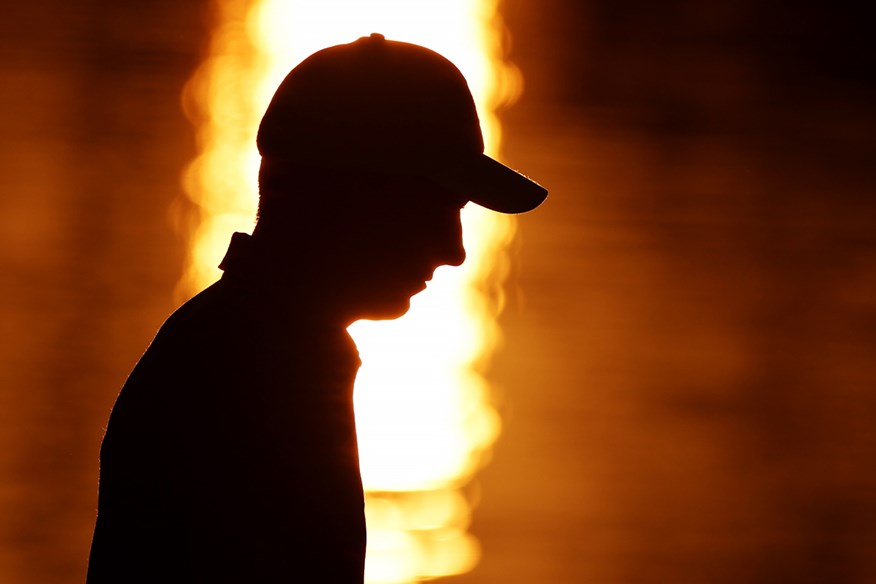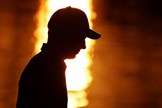Jordan Spieth: How golf’s golden boy lost his game – and might just be finding it again
Last updated:
He won two majors by 21 and looked destined to dominate golf for the next decade. But Jordan Spieth’s journey since 2015 has been anything but smooth. Now, after surgery, setbacks, and signs of a resurgence, he’s chasing history once again at the PGA Championship.
In 2015, a 21-year-old Jordan Spieth captivated the golf world by clinching the first two majors of the year – the Masters and U.S. Open – sparking talk of a calendar Grand Slam.
He didn’t quite pull off that never-been-done-before feat, but he only missed out on the Claret Jug by a single shot at St Andrews and finished runner-up at the PGA Championship too. Spieth didn’t just flirt with history that season – he took it out for dinner and nearly got down on one knee.
Suddenly, Spieth was golf’s hottest property. Kids who once wore Tiger and Rory’s Nike or Rickie Fowler’s Puma were now decked head-to-toe in Under Armour. And it wasn’t just the trophies. It was the magic. He putted like a dream, scrambled like Seve, and carried himself with a maturity way beyond his years. Spieth climbed to world number one and looked like the guy who’d rule the sport for the next decade. The whispers of a “Tiger-like” reign had already begun.
“He can be great,” said Woods. “A rare talent,” offered Phil Mickelson. “A superstar,” declared Paul Azinger. “A special young kid,” said Jack Nicklaus.
“It just came together (at the Masters and U.S. Open) and the other majors we had a chance,” said Spieth. “If I could somehow duplicate that year for the rest of my career, I would be pretty pleased.”
But now, 10 years on, Spieth is barely inside the world’s top 50 and has sometimes teetered close to falling outside the top 100. He’s winless in over three years. His major record in that time includes more missed cuts than top-10s.
A decade after the suggestions he’d dominate the sport, we’re now left asking what went wrong – and can he turn it around?
Can Spieth add to a major tally that’s been stuck at three since 2017? Could he win the PGA Championship at Quail Hollow and complete the career grand slam – just weeks after Rory McIlroy became the sixth golfer in history to do so?
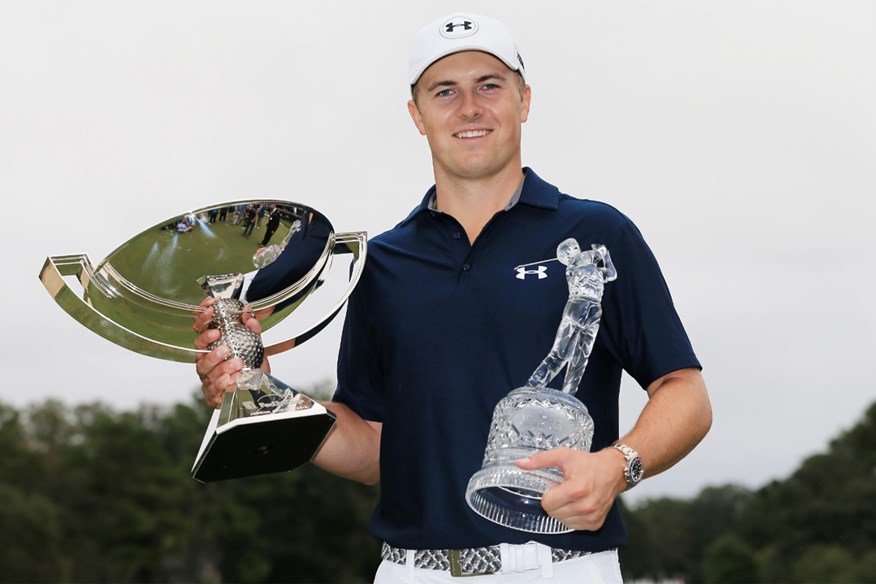
2015-2017: A star is born
2015: The year Spieth was special
In that breakthrough 2015 season, Spieth won five times – including two majors – finished in the top-five at all four of the big events, was named PGA Tour Player of the Year and PGA Player of the Year, topped the FedEx Cup money list, and finished 2015 ranked No. 1 in the world.
Perhaps most fascinating was how he broke what seemed to be the mould for success in the 21st century. In an age of power hitting and textbook swings, Spieth tackled the game differently. He wasn’t the longest or the most athletic. His swing featured a “chicken wing” that most amateurs would fight to rid themselves of. He looked at the hole, not the ball, when making short putts. He defied logic. But his touch was magic. His putter was a wand. And his brain was a supercomputer in spikes.
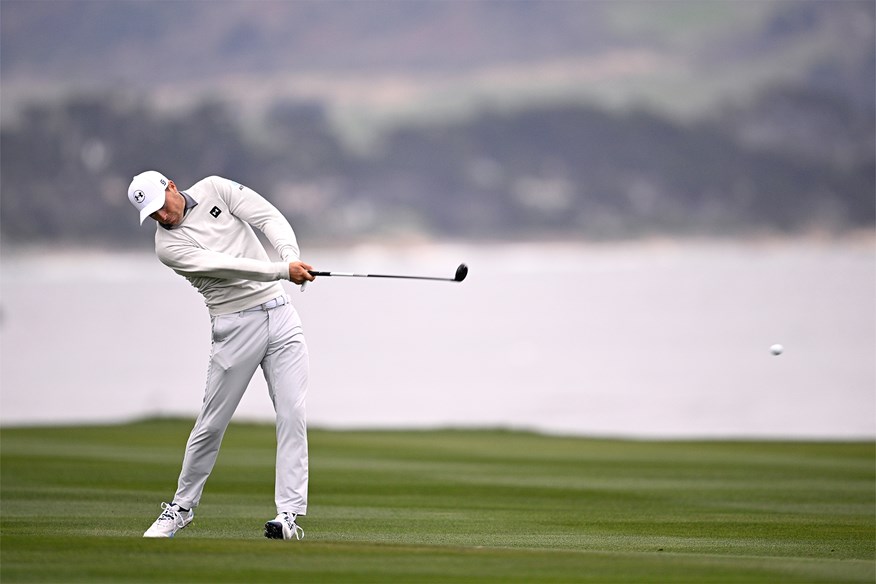
It’s often said that Spieth’s magical short game and putter mask flaws in his long game. And at times, his otherworldly touch on the greens has made him a threat even when his ball-striking was merely average. But, in 2015, it was anything but average. While he led the PGA Tour in Putting Average, Putts Per Round, and One-putt Percentage, every facet of his game was firing.
- SG: Off the Tee – 15th (+0.494)
- SG: Approach – 11th (+0.618)
- SG: Around the Green – 7th (+0.471)
- SG: Putting – 9th (+0.571)
- SG: Total — 2nd (+2.154)
“It’s hard to describe,” said Ben Crenshaw. “He just seems to have a sixth sense of playing the game. He breaks down courses in his preparation and he executes his game plan. He realizes his strengths, which are in so many things. I don’t see any part of his game where he’s lacking. That short game has a diamond brilliance all of its own.”
Spieth holed 62 putts from 15–25 feet that year, converting at a rate of 27.19% that no PGA Tour player has ever matched – before or since. He made 20-footers look like tap-ins.
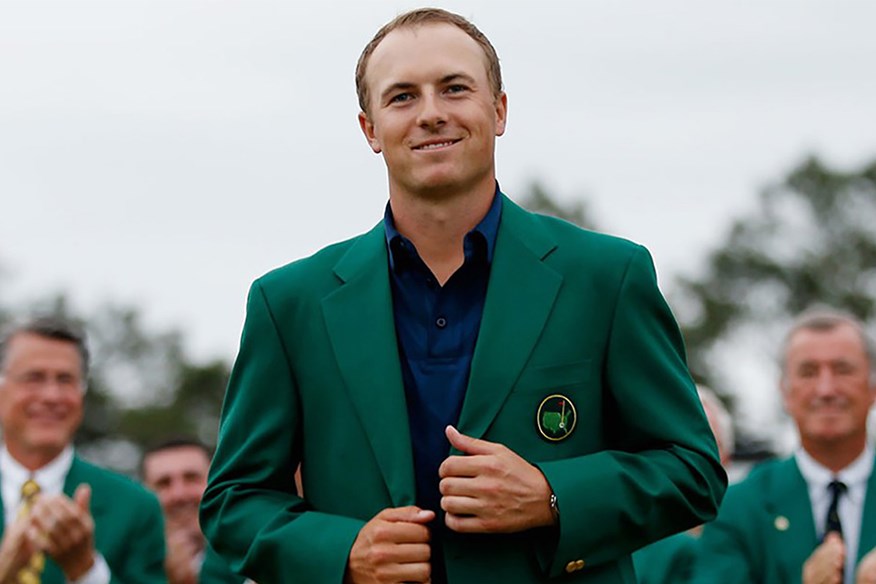
2016: One hole from immortality
Spieth won two PGA Tour titles in 2016 and missed only two cuts all year. But the year will always be remembered for what happened on a little par-3 at Augusta National.
Defending his title, Spieth looked every bit the Masters maestro for three and a half rounds. After birdieing the 6th, 7th, 8th, and 9th on Sunday, he reached the 10th tee with a five-shot lead. It wasn’t a question of whether he’d win – only by how much.
But then came the collapse.
He bogeyed 10. And 11. Then, infamously, he dumped two balls into Rae’s Creek at the par-3 12th to card a quadruple-bogey seven – handing the tournament, and history, to Danny Willett.
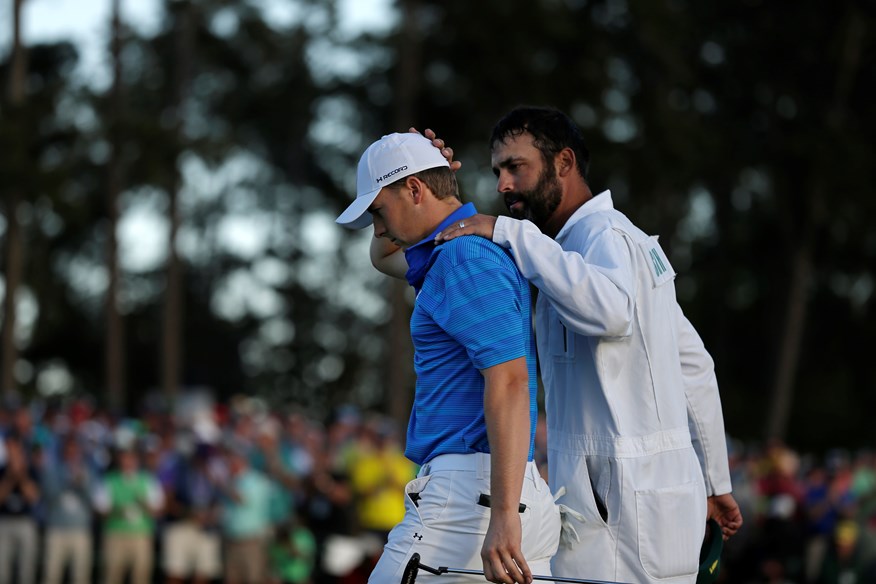
It wasn’t just two bad shots. It was a shocking, cinematic unravelling – one of the most brutal stretches in major championship lore.
He finished runner-up, but he might as well have been last. For the first time, golf’s unshakeable wunderkind had looked… shaken.
He called it a “really tough 30 minutes”. The world called it something else: a scar that never fully healed.
2017: Back on track
In 2017, Spieth won The Travelers Championship thanks to one of the most iconic playoff bunker shots ever seen. Less than a month later, he added major number three in a dramatic victory at Royal Birkdale, capped by the now iconic “go get that” celebration. His Claret Jug wasn’t just a major win – it was catharsis. After the heartbreak of that Augusta back-nine collapse, the way Spieth handled Sunday wobbles at Birkdale showed immense fortitude.
He looked destined to be one of the all-time greats.
And he was certainly on track. By 24, he had 11 PGA Tour wins and three majors. The only other player to hit those marks at that age? You guessed it. A fella called Tiger Woods.
And then the impossible happened… Spieth stopped winning.
2018-2020: The falloff
2018: The year the putter left him
Spieth’s putter, once a magic wand that turned mid-range putts into mere formalities, went colder than a Scottish summer. He ranked 123rd for Strokes Gained: Putting during the 2018 season. His middling tee-to-green numbers weren’t enough to keep him competitive. He dropped out of the world’s top 30 and didn’t record a single win.
2019: The year Spieth’s Scotty couldn’t save him
The following year, Spieth got his putting back – not just to 2015 levels, but even better. But, at the same time, his swing deserted him. Gone was his natural flow and commitment; in their place, tension and overthinking.
He ranked 176th for SG: Off the Tee and 145th for SG: Approach, losing significant strokes to the field in both categories.
He missed cuts. He didn’t record a single top-10 in a major. Spieth looked lost – not just physically, but mentally.
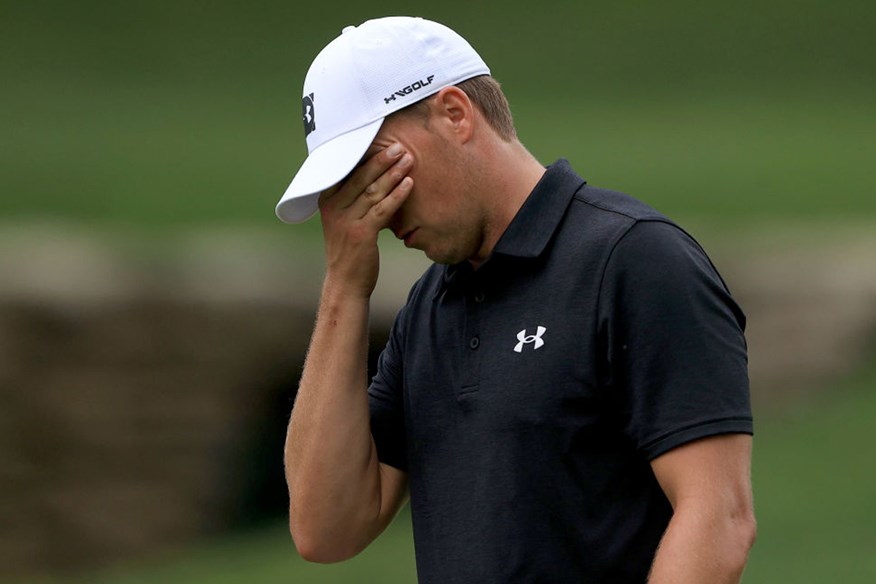
2020: Rock bottom
If 2018 was the year of poor putting but reasonable long game, and 2019 was the year of great putting but awful long game, 2020 was the perfect storm where everything went wrong at once.
He ranked 165th in SG: Off the Tee, 97th in SG: Approach, and 105th in SG: Putting.
His best finish at a major was T46 in the Masters. He finished T71 at the PGA Championship, missed the cut at the US Open, and was probably spared more major championship struggles thanks to the Open being cancelled due to COVID.
It was a third year in a row without a win and saw him drop out of the world’s top 90. Golf’s golden boy was now a painful, distant memory.
A major factor in his slump: Spieth admitted he didn’t really know why he’d been so good when he was so good. That meant that when things went wrong, he had no blueprint for how to fix them.
“I almost took ignorance as bliss in a lot of parts of my game,” he explained. “Then they got off, and so I had to figure out why I did them well and how to train it back.”
2021-2023: Don’t call it a comeback
2021: A flicker of hope
After three brutal years, 2021 sparked genuine hope for the first time in a while. Spieth rattled off five top-5s in eight starts, including victory at the Valero Texas Open – his first win in almost four years.
At the Masters, he was in contention again, finishing T3 as Matsuyama took the Green Jacket. Spieth followed that with top-30 finishes at the PGA Championship and US Open, before coming runner-up to Collin Morikawa at The Open.
- SG: Off the Tee – 135th (-0.091)
- SG: Approach – 41st (+0.365)
- SG: Around the Green – 6th (+0.407)
- SG: Putting – 33rd (+0.389)
- SG: Total – 26th (+1.069)
His driving was still an issue, but he was getting by. It wasn’t 2015, but it was a start.
2022: One step forward, two steps back
Spieth won again in 2022, thanks to playoff victory at the RBC Heritage, but a T8 at The Open was the best of an uninspiring showing in majors during a season of inconsistency.
The driver improved. The irons stayed solid. But the putter – again – became a liability. He dropped to 155th in strokes gained putting, the worst of his career. The same putter that had propelled him to incredible heights a few years ago was now dragging him down, costing him almost a full shot during the course of a tournament.
- SG: Off the Tee – 38th (+0.335)
- SG: Approach – 31st (+0.416)
- SG: Around the Green – 27th (+0.295)
- SG: Putting – 155th (-0.207)
- SG: Total – 30th (+0.839)
At times, he looked like he was trying to summon a version of himself that no longer existed – staring at putts in disbelief, shaking his head, walking faster between shots. Caddie Michael Grellar, no stranger to dodging Spieth’s verbal bullets, now needed full body armour.
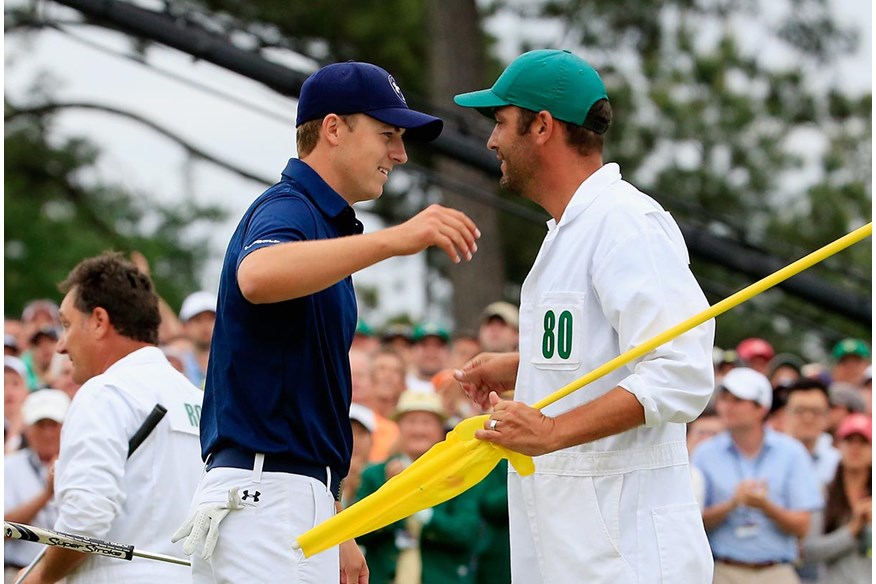
2023: A decent year by anyone else’s standards… but not Spieth’s
After several years of significant struggles, 2023 was refreshing in that no part of Spieth’s game was particularly bad. The problem? None of it was great either.
He ranked 59th in SG: Off the Tee, 71st in SG: Approach, and 79th in SG: Putting.
The winless run continued, but he was at least threatening leaderboards once more. Several top-five finishes on the PGA Tour saw him climb briefly back into the OWGR top-10, though he finished the year outside it.
In the majors, he registered a T4 at the Masters, missed the cut at the US Open, and finished T29 and T23 at the PGA Championship and Open Championship.
2024: The year his touch deserted him
Spieth played sparingly and poorly. He missed the cut at The Masters and didn’t manage a top-20 in any major. He missed the cut at a third of the events he played.
Strangely, his driving – usually a weak point – was the only area of the game where he gained strokes against the field. It was Spieth’s short game, the one thing that had never let him down, that let him down. He was still missing lots of greens, and now he couldn’t rely on his wedges to save him.
- SG: Off the Tee – 15th (+0.500)
- SG: Approach – 138th (-0.204)
- SG: Around the Green – 108th (-0.024)
- SG: Putting – 101st (-0.006)
- SG: Total – 80th (+0.265)
For the first time since 2014, he didn’t make the Tour Championship. He fell from 13th to 43rd in the OWGR.
What we didn’t know during the slump was that Spieth was hiding something.
And then it all became clear. Spieth had been battling a persistent wrist injury, acknowledging that he’d been compensating during swings and had lost confidence in certain motions – especially delicate shots around the green.
Spieth underwent surgery in the August.
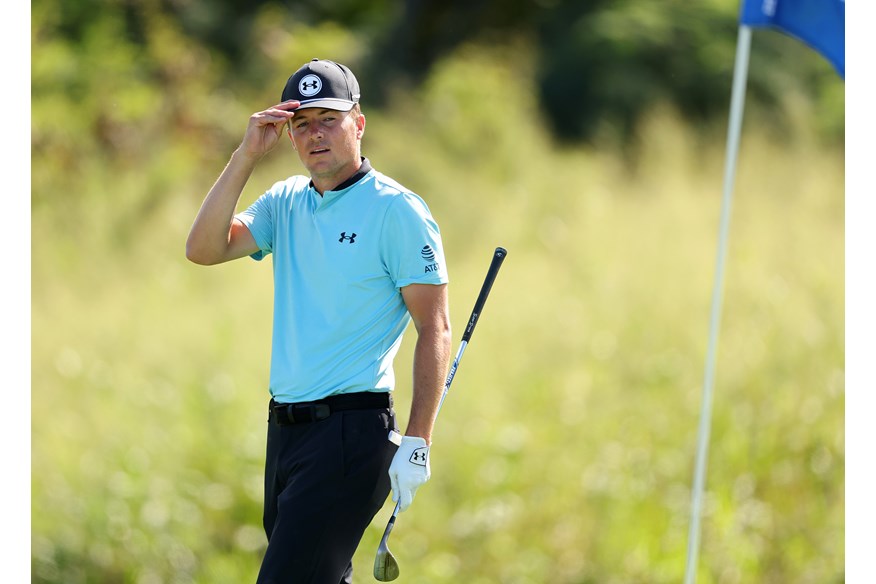
2025: Signs of life
At last, reason for real optimism. After some setbacks, the wrist seems to be healthy again.
This is the first season since 2017 where every area of Spieth’s game ranks in the top 60 for Strokes Gained.
That’s not setting the world alight, and nor are his results – he hasn’t finished in the top three of any tournament this year – but his long game is now at a point where he could win if he can regain that short game magic.
- SG: Off the Tee – 38th (+0.291)
- SG: Approach – 48th (+0.324)
- SG: Around the Green – 58th (+0.146)
- SG: Putting – 56th (+0.179)
- SG: Total – 17th (+0.940)
He finished fourth last week at the CJ Cup by Byron Nelson to re-enter the world’s top 50 and make it three top-10s this year. But the way he did it was the most tantalising part – a final-round 62 featured nine birdies, no bogeys, and equalled the best score of his PGA Tour career.
He’s missed only one cut this year. He finished T14 at the Masters and hasn’t missed a cut in three months.
It would be a stretch to say Spieth is one of the favourites at Quail Hollow – in fact, he’s 50/1 if you shop around – but it would take a brave man to completely write him off.
“Quail Hollow, it’s a Bermuda golf course which I love,” said Spieth following that Sunday 62 at TPC Craig Ranch. “I grew up on Bermuda. Got to play realty fast greens. My ball striking is coming around at a really nice time. I felt like I’ve been progressing each week since the surgery. I’ve been stroking it really well. Statistically I’ve been on a really good putting run.”
And just like that, the flicker became a flame. After years of trying to find his way back, Spieth isn’t just showing signs of life – he’s starting to look like himself again.
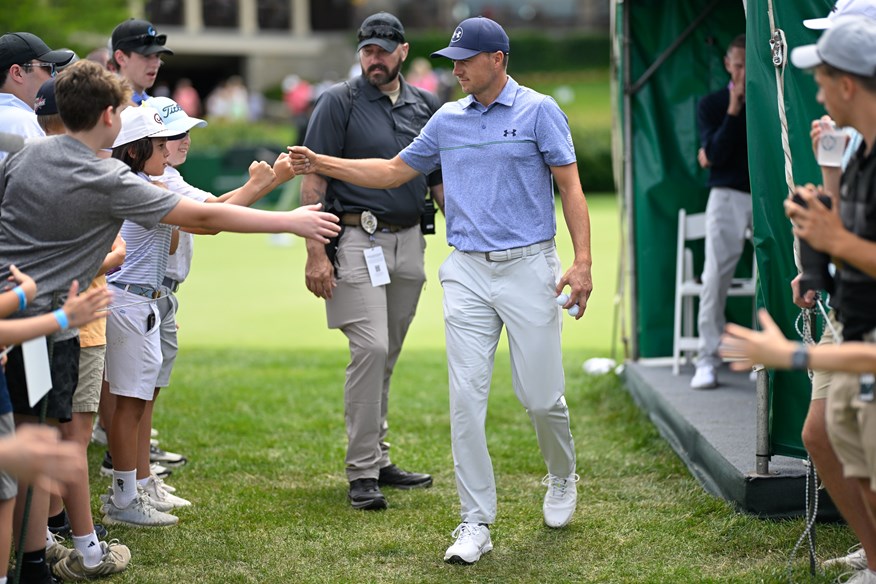
Legacy and the long view
Jordan Spieth’s career is already a success.
Eleven PGA Tour wins. Three majors. A FedEx Cup. A Ryder Cup icon. A global fanbase.
But what makes Spieth’s story unique – and so compelling – is that we’ve felt every part of it. He wears his heart on his sleeve – through the highs, the lows, the spirals, and the attempted comebacks. Few modern players have lived their slump as publicly as Spieth. Rory McIlroy and Justin Thomas have had dips – but Spieth’s lasted years. He has looked like both the best and most bewildering golfer in the world – sometimes in the same round.
And now, we wonder: what’s next?
He’s 31. That’s still young – especially considering the average age of a major winner is 32.
He’s healthy. He’s wiser. He still has the vision. And he still believes.
Maybe that’s enough.
Because if golf’s golden boy can find the magic again – for one week, at one PGA Championship – all the struggles will be so worth it.
But, even if Spieth never wins another major, his impact is secure. He delivered one of the most compelling breakout years in golf history. He brought drama, personality, and artistry. He proved that golf could be emotional and expressive – and that in an age of power hitters and swing perfection, scrambling can be just as thrilling as ball-striking.
In 2017, after his Open win, Spieth said: “I’ve shown I can do it when I’m on.”
That’s the puzzle he’s still trying to solve. And if he does – even for one more magical week – it’ll be one of golf’s greatest comebacks.
- READ NEXT: Which golfers have won the Grand Slam?
